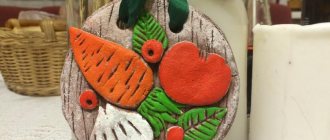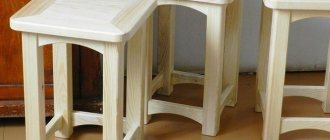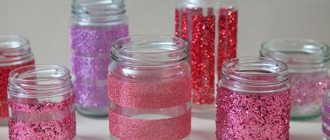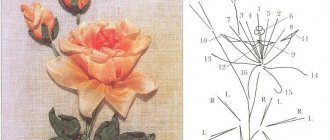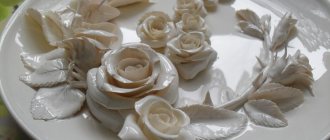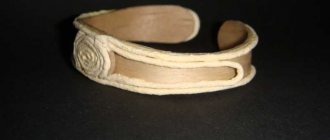People have been breeding animals for personal purposes for thousands of years. Even in modern realities, poultry farming is still a relevant activity. Poultry farming means always accessible, environmentally friendly meat and eggs, as well as affordable and high-quality fertilizer for the garden.
In order for the livestock to feel comfortable, it is necessary to pay careful attention to the organization of the poultry yard. So, in addition to food, the chicken should have constant access to fresh water. Dehydration can have an extremely negative impact on the bird.
The main reasons for the need for drinking water
The first reason is the need to control the volume of incoming water. On average, one adult chicken consumes about half a liter of water per day.
If the amount of fluid is less, dehydration will begin. If water is given in ordinary containers, without protection against penetration, then most of the liquid will splash.
This is precisely the reason for creating original drinking bowls for chickens with your own hands.
The second reason follows from the first. It includes two points:
- Water in a drinking bowl without special protective structures quickly becomes contaminated. Microbes begin to actively multiply in it. Drinking such water can result in the death of the bird. Chickens especially suffer from this.
- Another problem with conventional open feeders is wet feet. During the cold season, this can lead to a cold.
Main requirements for the device
When choosing a drinker, poultry farmers take into account the number of planned livestock, bred or purchased at the same time, as well as technical characteristics:
- capacity - the average water requirement of chickens is twice that of feed. To prevent rapidly growing young animals from experiencing thirst, sufficiently capacious tanks are needed;
- shallow depth (for open-type structures) - active individuals with open access to water can choke or even drown. To avoid such situations, it is recommended to take shallow containers; the ideal option when raising young animals is to use closed-type devices;
- autonomy - since it is not possible to fully control watering, the device must provide automatic supply of drinking water so that the chicks can quench their thirst at any time;
- environmental safety - in the manufacture of the device, high-quality materials (plastic) that do not emit toxic substances should be used. If you purchase a factory-made drinker, you must make sure that the product has passed certification;
- simplicity and reliability of operation - it is important to ensure the convenience of the design for filling and cleaning, to provide protection for water from clogging with food and excrement;
- stability - to prevent overturning, the container must be well secured to the wall of the poultry house or to the floor.
Drinking water for poultry should be as clean and of high quality as for people
Main types of drinkers
Once the understanding comes that the drinking bowl will have to be made in any case, a small difficulty arises.
There are hundreds of different drinkers, but you only need to choose one. A little classification will help solve this problem.Read here - Do-it-yourself polycarbonate greenhouse - the best ideas on how to make an effective greenhouse yourself, instructions and tips in the photo in the review!
According to the characteristics, drinkers can be divided into the following:
- Drip.
- Vacuum.
- Siphon.
- Ordinary, open type.
The points mentioned above characterize the principle of operation of the drinking bowl. They are important, but division according to another criterion is more important.
In accordance with them, they distinguish:
- Regular.
- Automatic.
Simple drinking containers
We talked briefly about simple containers earlier. But it is worth finding out what they are based on.
The name speaks for itself; these are the simplest designs. We pay for simplicity by constant monitoring of watering, breeding of harmful microorganisms and pollution.
Let's briefly list the popular types.
Prices for polypropylene pipes for sewerage
Polypropylene pipes for sewerage
Everything is quite simple: the pipe is connected to a water source and closed with a plug at the other end. Holes are marked and made in the pipe itself, as shown in the photo. We advise you to clean the edges of the cut holes for the safety of the chickens. But you should monitor the water level in the pipe and prevent spillage.
Marking slots in sewer pipes
Nipple single drinker
Suitable for a small family of laying hens. All we need is a bottle (1-5 liters) with a hole drilled in the cap and a “180” nipple inserted into it.
Automatic drinker with nipple “180”
Automatic chicken drinker
There is no point in describing ordinary drinking bowls. These are special containers into which you need to periodically add water, which is not very convenient. A do-it-yourself automatic waterer for chickens is a completely different matter.
Check it out here too!
- Do-it-yourself barbecue from a gas cylinder: step-by-step instructions, choosing the optimal sizes and tips for choosing projects (110 photos)
Do-it-yourself winter chicken coop: design, layout, insulation, heating. 80 photos of warm chicken coops
- How to make a snow blower with your own hands: manufacturing methods, diagrams, drawings, construction options and application nuances (100 photos + video)
Of course, such products have a disadvantage. Collecting them is more difficult than regular ones, but the return will be greater. Moreover, a photo of do-it-yourself drinking bowls for chickens will help with assembly.
Float system
The purchased design consists of containers mounted on a horizontal axis. Water is supplied through the hole. As the bowl is filled, it lowers and uses a special nozzle to block the access of water. After emptying, it rises and the liquid flows again.
There are quite a few varieties of this type of device, but it is the drinking cup options that have gained great popularity. Craftsmen have developed many similar systems. These designs are automatic and work the same way as a float system in a toilet:
- Birds drink from a trough or several troughs filled through pipes, from a bottle (barrel) of water. This container contains a float mechanism connected to the faucet lever. Water from the tap is drawn into the barrel, and as it fills, the float begins to rise along with the water. Moving upward, he turns the handle of the faucet connected to it and closes it at a certain level. When the troughs are emptied by birds, the amount of water in the container will decrease, the float along with the liquid level will go down, the tap will open, and the process will repeat.
- The float is connected to a bottle or bowl with liquid mounted on an axis parallel to the drinking container. As the liquid level decreases, the float will go down, dragging and turning the cup. Water will fill the trough. Experimentally, you can determine the location of the axis so that when the bowl is full, it is in equilibrium when the drinking container is full and the float is at the top. To prevent the bowl from tipping backwards, a simple stopper is needed. This system is effective for 1-2 hours. After that it is filled again.
DIY bottle waterer for chickens
Plastic drinking bowls are the most common option. There are several reasons for this, the main ones being the simplicity of the product, its durability and efficiency.
In order to make this device you will need the following kit:
- Bottle. It can be any size depending on how many chickens it is designed for.
- The bowl is about five centimeters deep. An important condition is that it must be at least a couple of centimeters wider than the bottle in radius.
- A set of tools including fasteners, a knife, an awl and a rope.
Check it out here too!
- How to make a pump with your own hands - step-by-step manufacturing of a pump and options for making simple and effective pumps (95 photos + video)
- Do-it-yourself hot smoked smokehouse: 100 photos, review of the best drawings, project selection and construction options
- How to make a cage for a parrot: basic requirements, tools and materials, step-by-step photo instructions. Tips from experts on arranging a cage
Next you should stick to this plan:
- Cut off the neck of the bottle.
- Make several holes three centimeters from the cut with an awl.
- Attach the bottle with the cut end to the bowl. It is necessary to create a tight contact so that the water can only pour out through the holes made with an awl.
- Cut off the bottom of the bottle. Water will be poured into the formed crater.
- Make two holes along the edges of the top of the bottle with an awl. In which, in the manner of a bucket handle, secure a wire or rope.
The drinking bowl is ready. All that remains is to hang it in the right place. Hanging should be based on the age of the chickens. For adults at a height of 10 cm from the ground, for chickens - lower.
Automatic drinker with dispenser
Required tools and materials
The design with a dispenser takes longer to manufacture. The circuit is more complex than the previous options, but the device is reliable.
To make an automatic drinker with a dispenser you will need: a plastic tube, onto which cellophane is usually screwed. Its length depends on the number of chickens.
You need polystyrene foam, wooden cork, copper or aluminum wire, a piece of rubber (a regular eraser will do).
Also take a frame seal with a soft rubber band, glue, nails, and a pen case with a pointed end.
First stage
Fold the wire and wrap the nail tightly on the right and left sides. The result is a design with a “head” that easily rotates on the nail.
Now we need to make its area larger. To do this, screw a piece of hard rubber into it and secure it tightly with the “head” of the wire. Cut off the excess part of the elastic with a knife so that there are no protruding ends.
Take a wine bottle cork and use a drill or sharp awl to make two small holes. Insert two free ends of the wire into them, which form a “swinging” structure. They must be long enough to fit firmly into the cork.
Second phase
Now we need to prepare the groove. To do this, cut a piece of soft plastic pipe horizontally. Glue a small piece of foam with a drilled hole to one end. Use rubber cement because acetone will begin to dissolve the foam when left in contact with it for a long time.
Using a soldering iron, attach a piece of plastic to the other end of the tube and glue it with rubber cement to seal it tightly.
Make a through hole in the side edge of the groove. Cut a section from the pen with a sharp end and two small pieces in the shape of a washer. Insert a nail into the hole you made and put a washer on it.
Then thread the “swinging” structure and secure with a second washer. Press the nail down so it goes through the second side wall.
Nipple drinker
This is one of the simple and at the same time effective drinkers. To make it you will need a container with a large volume and nipples. The process itself includes the following stages:
- Drill several holes in the bottom of the container.
- Attach the nipples to them.
Water from such a drinking bowl begins to flow after the chickens begin to drink.
The main advantages are as follows:
- Hygiene.
- Avoid wasting water.
conclusions
To raise chickens, it is necessary to create comfortable living conditions for them, provide them with high-quality feed, as well as clean water. Proper watering of chickens of any breed, such as Ayam Tsemani, Legbar and others, promotes good digestion of food, and therefore has a positive effect on egg production and weight gain. There are several types of drinking bowls that you can make with your own hands, without the help of any experienced professionals:
- Vacuum drinking systems.
- Siphon drinkers.
- Nipple.
- Drinkers made of PVC pipes.
These types of drinkers have their advantages and disadvantages, but they are still much better, more economical and more hygienic than the usual bowls, pots, and plastic containers with water near poultry houses. Conventional drinking containers are easy to use, but have many disadvantages: frequent contamination, water must be brought several times a day. And especially in the warm season, the risk of pathogenic bacteria appearing in dirty, stagnant water increases.
Briefly about the main thing
A do-it-yourself drinking bowl is a device that will bring a lot of benefits. It's not difficult to make and the payoff is extremely high.
Check it out here too!
- Do-it-yourself trolley - how and from what to build a decorative and tool trolley (135 photos and videos)
- DIY nests for laying hens: drawings, tricks, best solutions and tips on how to make nests correctly (115 photos and videos)
How to hem felt boots with your own hands: materials, tools, useful tips for hemming. Step-by-step instructions with photos + master class with video!
Frost protection
In frosty winter, cold water is supplied through pipes. Chickens can catch a cold and die. To prevent this from happening, it is recommended to heat the drinking bowls. The cheapest option is to make wooden boxes underneath and place ordinary light bulbs inside, connecting them to the network with a 220 cable in thick insulation, which is better to bury or run under the floor.
A more expensive, but effective way is to install an Ariston-type electric tank for heating water in the chicken coop. Then you won’t have to monitor it - it will work automatically.
Photo of a do-it-yourself drinking bowl for chickens
Use of PVC pipes
Among the advantages, one can note without hesitation the practicality, simplicity and availability of components; all structural elements can be easily purchased on the market at a reasonable price.
Perhaps some fittings were left behind in a garage or shed after repairs; after a good rummage through the accumulations of materials, you will be able to find some quite useful parts.
The pipes are assembled by fixing each other into grooves, so a special soldering iron is not needed as for other options made of plastic fittings. The correctly selected diameter of the components will provide the birds with plenty of water and help the owner save water every day.
Simple designs
Having a bucket available, you can make a temporary drinking bowl while the main structure is under development. As a basis, take a pallet from a flower vase; it is quite heavy and stable.
It is worth remembering that its size should be slightly larger than the container itself, otherwise the stability effect will not be achieved. The liquid from the bucket will gradually accumulate in the pan and the birds will be able to easily quench their thirst.
When the tank runs out of water, it will need to be replenished manually; this moment cannot be missed. Thanks to the advice received, you can achieve pretty good results and provide yourself not only with eggs and meat, but also with plenty of free time to garden or communicate with loved ones.
